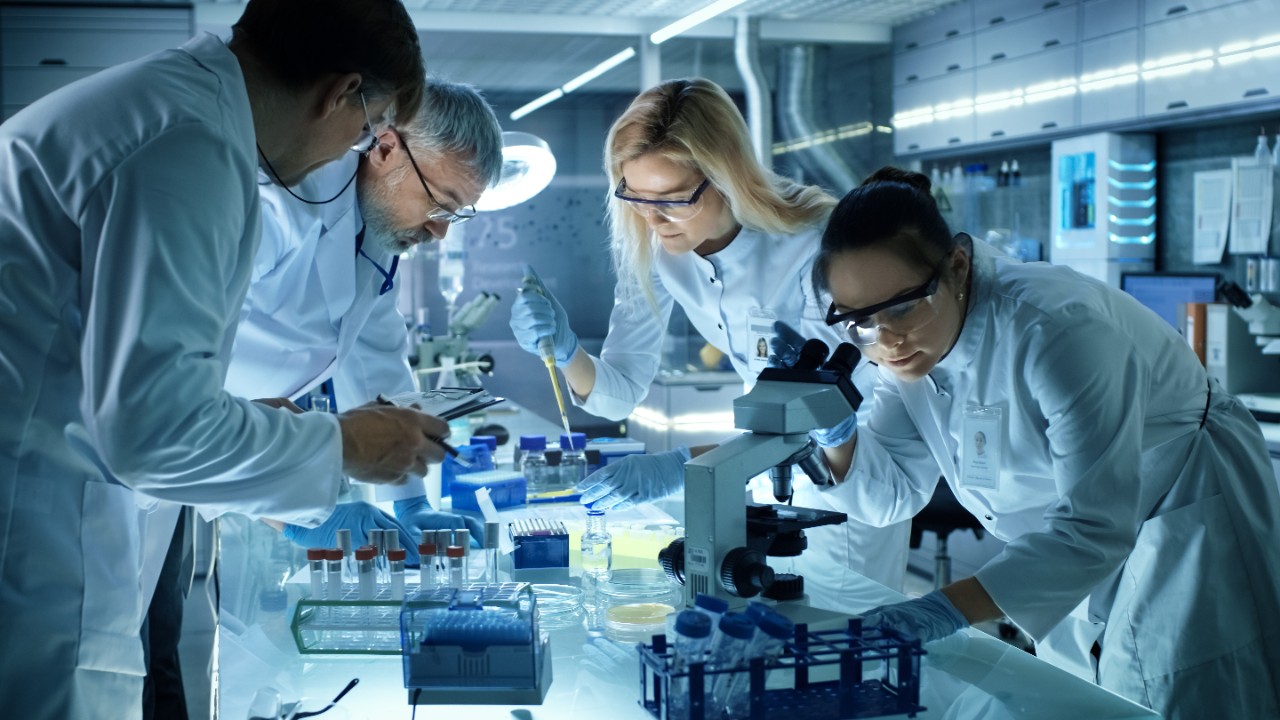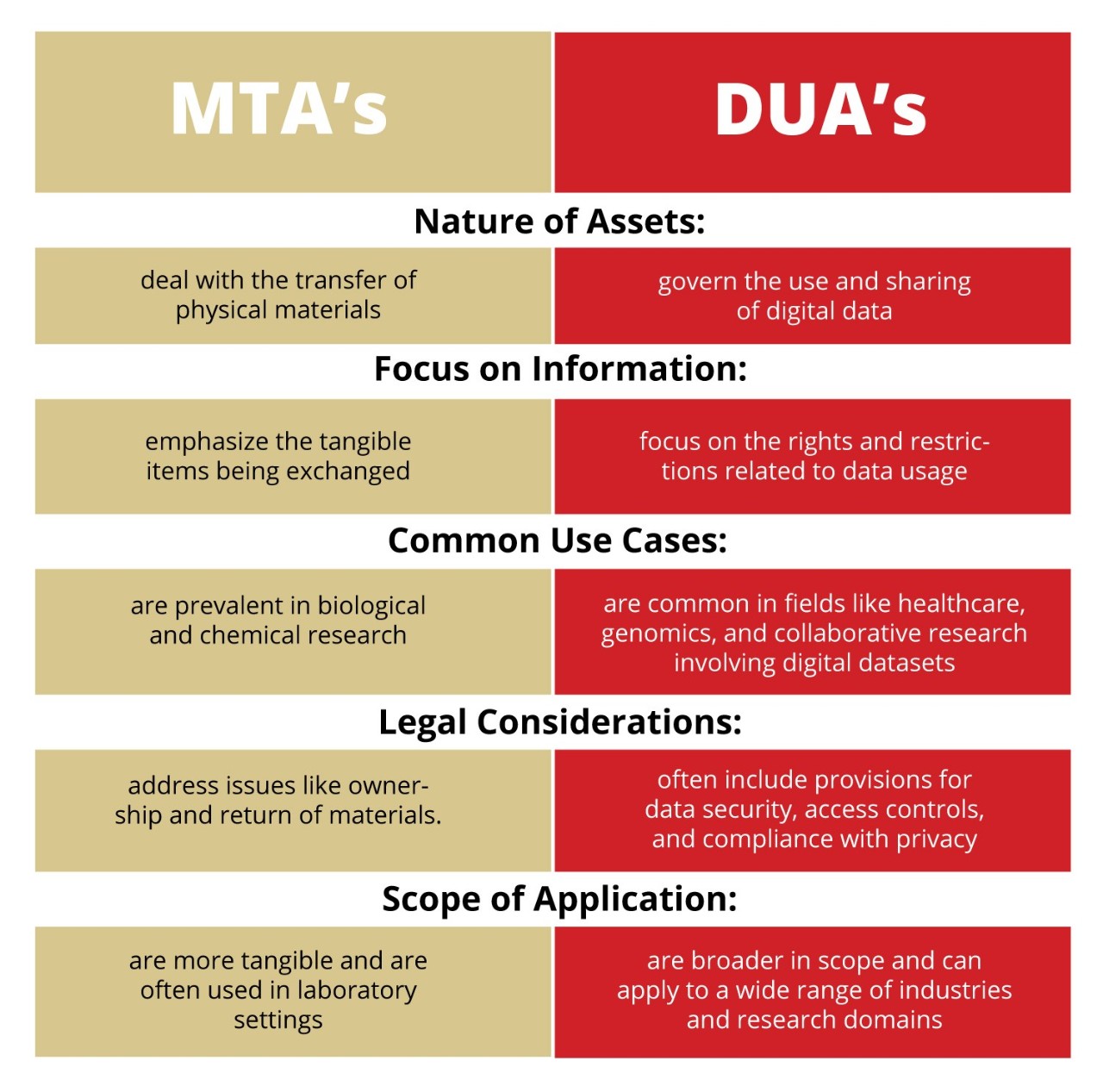
UC academic collaborations forge the path to scientific progress
Providing unity in knowledge
In the dynamic realm of scientific research, material transfer agreements (MTAs) and data use agreements (DUAs) are key factors in facilitating groundbreaking collaborations.
As research institutions join forces through these pivotal frameworks, the potential for transformative breakthroughs in diverse fields becomes increasingly tangible.
Safeguarding the shared work of researchers is paramount, making MTA and DUA agreements essential frameworks to govern material and data exchange. These agreements play a vital role in both upholding intellectual property rights and ethical standards, and fostering transparent, mutually beneficial collaborative efforts.
Handling these agreements is the work of Technology Transfer, located inside the 1819 Innovation Hub.
“If someone at UC wants to transfer materials outside UC for research purposes, MTAs and DUAs maintain the property rights of UC as the provider institution and clearly define specific conditions for its use to the recipient institution,” Geoffrey Pinski, UC assistant vice president for technology transfer in the Office of Innovation, said.
Making intellectual property reasonably available to other institutions includes protections that we put into place. These are very straightforward and focused on ensuring the recipient protects and credits the original researcher and UC.
Geoffrey Pinski UC assistant vice president for technology transfer, Office of Innovation
MTAs
By engaging in MTAs, research institutions gain access to a wealth of resources, from specialized discovery to valuable datasets that can accelerate their research initiatives. These collaborations not only enhance the research capabilities of researchers but also provide the valuable insights and innovations that can improve the quality of life of society.
An example of how this might look is if UC is transferring a type of cell line, the MTA would specify details such as:
- The quantity of the cell line being transferred
- Conditions for the use of the cell line in experiments
- Any restrictions on sharing the cell line with third parties
- Obligations for the proper handling, storage and disposal of the cell line

Geoffrey Pinski. Photo/Greg Glevicky
UC encourages faculty to generate and share new knowledge as keeping it on a shelf doesn’t help anyone. However, it is beneficial for researchers to go through Technology Transfer to protect their work while sharing.
“Making intellectual property reasonably available to other institutions includes protections that we put into place," Pinski said. "These are very straightforward and focused on ensuring the recipient protects and credits the original researcher and UC.”
DUAs
Simultaneously, data use agreements are becoming increasingly integral in the era of big data. As the volume of data generated by research projects continues to grow, the responsible and ethical use of this information is paramount in establishing the guidelines for accessing, sharing and analyzing data, ensuring that sensitive information is handled with the utmost care.
Oftentimes it is the researcher who is contacted directly, according to licensing associate Sev Sheets, who said DUAs govern data which isn't publicly accessible or might have some restrictions attached such as patient health data.
Sheets acknowledged most requests come from research institutions, but they also can come from an outside organization like a pharmaceutical company.
“For example, UC is leading the ERICH-GENE study, an international, multi-center, genetic case-control study of intracerebral hemorrhage, a type of stroke. The study involves global data and material sharing from researchers worldwide to identify biological risk factors in diverse populations. This relationship provides UC access to information and materials it wouldn’t otherwise have access to,” Sheets said.

Graphic/Greg Glevicky
Collective innovation
Material transfer agreements and data use agreements are not just legal documents; they facilitate a new era of collaborative research. Collaboration is a potent force for innovation.
"Our goal in reviewing these agreements is to keep the collaboration at the front of our mind, so our office strives to match, if not exceed, the dynamic pace of business operations. Sev stands out with an impressive seven-day turnaround time for these agreements," Pinski said.
Featured image at top: A team of medical research scientists collectively working. Photo/Gorodenkoff via Shutterstock
Innovation Lives Here
The University of Cincinnati is leading public urban universities into a new era of innovation and impact. Our faculty, staff and students are saving lives, changing outcomes and bending the future in our city's direction. Next Lives Here.
Related Stories
UC’s microchip training includes innovative VR
July 2, 2024
To build a virtual microchip factory, University of Cincinnati doctoral students turned to the real one where they work. UC launched a new training program for microchip manufacturing in advance of the new fabrication plant Intel Corp. is opening in Ohio.
University-wide Qualtrics license coming soon
July 2, 2024
The new university-wide Qualtrics license will provide current UC students, faculty, and staff members access to Qualtrics software, support, and technical assistance under a centralized license.
The entrepreneur’s guide to the power of networking
As an entrepreneur, connections with other business leaders can be just as valuable as the ideas and products that are brought to market. You can open doors to exciting opportunities, gain valuable insights and establish a robust support system through meaningful connections. Here’s why networking is essential and how you can leverage it to your advantage.
Bridging creativity and commerce
July 1, 2024
At the University of Cincinnati’s Carl H. Lindner College of Business, Victoria Mrofchak stands out not just for her academic excellence but for her remarkable blend of creativity and business acumen. A fourth-year marketing major with a minor in management and fine arts, scholarships help Mrofchak shape her future at the intersection of art and commerce.
Get to know Lisa Huffman, new dean of UC's CECH
July 1, 2024
UC News spoke with incoming CECH dean, Lisa Huffman, about her past experiences, the role family plays in her life, academic philosophies, goals for her time in this position and more. As we welcome the newest dean to University of Cincinnati, we encourage you to read on to learn more about Dean Huffman.
Meet UC’s Miss Ohio
July 1, 2024
UC biomedical science student Stephanie Finoti credits UC for helping to prepare her for the Miss Ohio Scholarship Pageant. She will represent Ohio in the national competition in January.
UC alum visits campus to teach students about footwear design
June 28, 2024
A 2011 graduate of design, UC alum Charley Hudak has seen his career trajectory go from intern to creative director for Tiger Woods' new athletic footwear brand, Sun Day Red. While he may run with the biggest cat in golf, Hudak doesn't forget his Bearcat roots and comes back each summer to teach youth about footwear design at DAAP Camps.
Cincinnati researchers want to know if MRIs can work better
June 28, 2024
WVXU and the Cincinnati Business Courier highlighted a new collaboration between the University of Cincinnati College of Medicine, UC Health GE HealthCare, JobsOhio, REDI Cincinnati and Cincinnati Children’s to create an MRI Research and Development Center of Excellence located on UC’s medical campus.
UC 1819 Innovation Hub workshop spreads AI awareness
June 28, 2024
Microsoft and Disrupt Now joined forces to run a June 24-27 seminar at UC’s 1819 Innovation Hub teaching Cincinnati residents how to responsibly use AI.
Free Wi-Fi, work area coming to Greater Cincinnati
June 27, 2024
St. Lawrence Park in Price Hill now has free Wi-Fi and a furnished outdoor space for community members to access digital needs. The space is part of The Nodes Project, which stands for “Neighborhoods of Design Engagement": a collaboration between UC DAAP communication designers and community entities.
